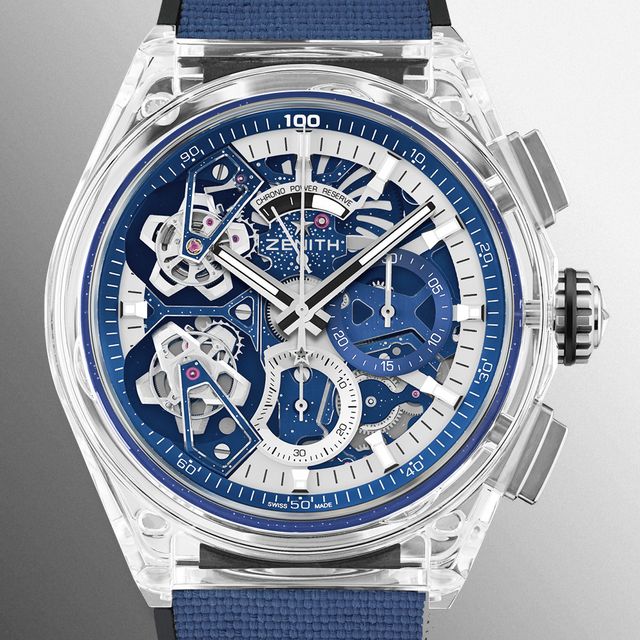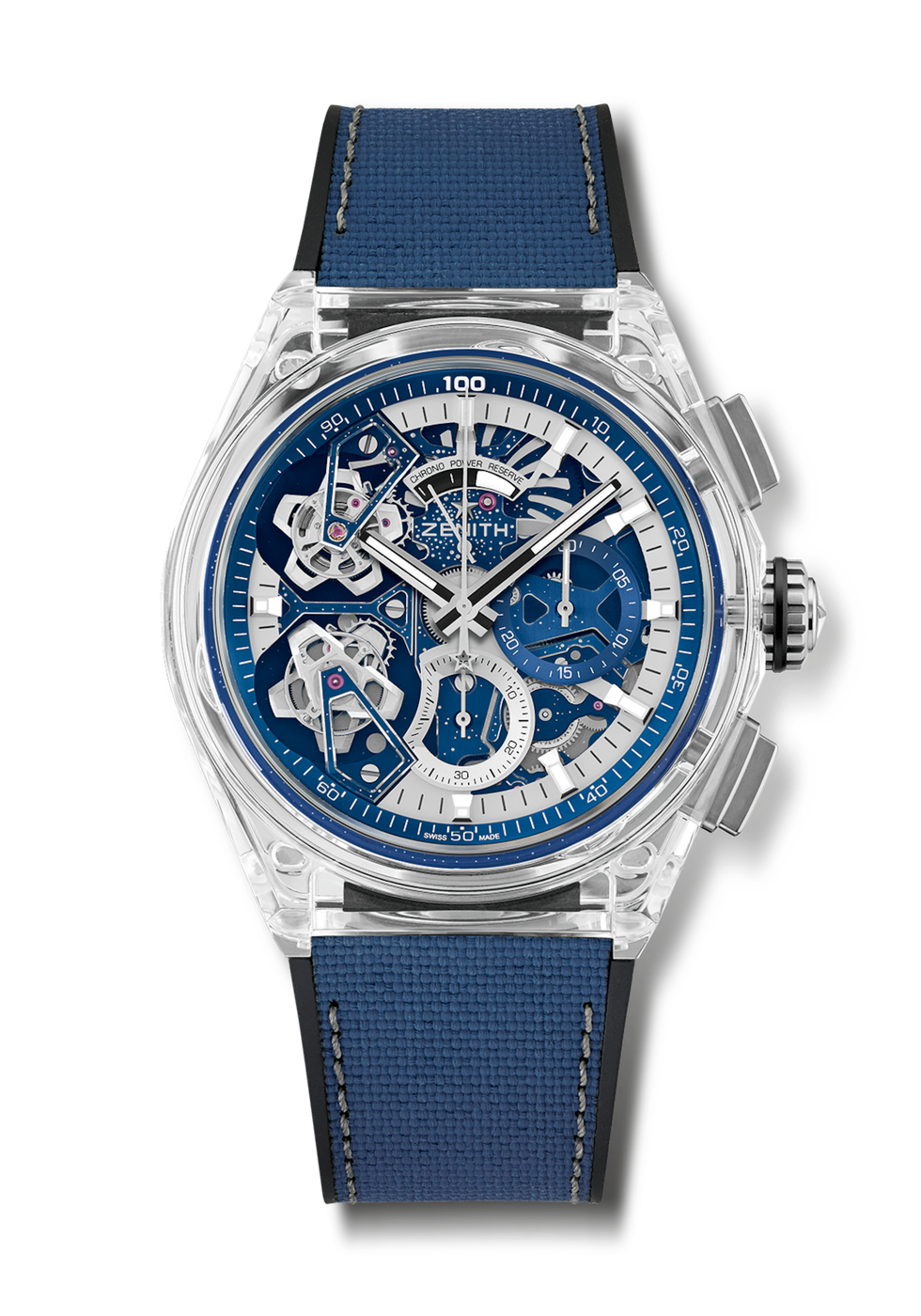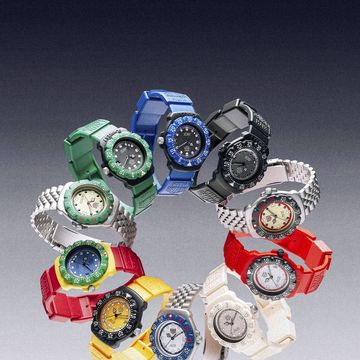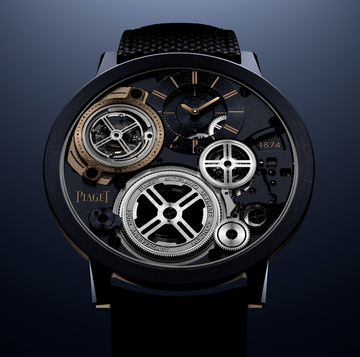While we are big fans, at Esquire, of the affordable daily beater, sometimes, at the other end of the watch market, pie-in-the-sky, what-if notions of splendour can’t fail to turn our heads. Witness the Zenith Defy 21 Double Tourbillon Sapphire, launched this week.
It’s a mix of old-school horology delivered alongside a mind-bending cocktail of engineering and alchemy. First, the case. Made from a single block of sapphire crystal instead of the traditional steel or precious metal, it means the entire inner workings of the watch are on show, front, back and sideways. So, they need to be on their best behaviour. These workings and bridges have been PVD coated in blue (a first for Zenith), with facets in rhodium grey to add depth. A constellation of stars peppers the various bridges of the skeletonised movement.
As well as being a thing of rare beauty, however, the watch also contains a rather special tweak to the movement in which two independent tourbillons rotate to mitigate the effects of gravity on the accuracy of the movement. One rotates in a minute to regulate running seconds, the other—which regulates the 100th-of-a-second main second hand—rockets round in just five seconds. All of this does not detract from the purely functional operation of the chronograph function.
Tourbillon complications were created to mitigate the effects of gravity on the position of a pocket watch, given that the watch performs differently in a vertical or horizontal position. As a piece of wizardry, it’s not on its own brand new; Abraham Louis Breguet created the first tourbillon in 1801. But creating tourbillons in the modern era continues to be the polestar of excellence for the majority of high-end Swiss watch brands. It’s as if you’re not in the club if you can’t do a tourbillon.
You may well question the relevance to you and me of a £149,400 double tourbillon watch made out of sapphire crystal. Think of these sorts of things as the concept cars of the watch world, where money is no obstacle to out-of-the-box creativity. These are the horological testing grounds; while they may be breaking entirely new ground in materials science, these exercises can also make the technology viable later at far less stratospheric prices. And, if you look close enough at more feet-on-the-ground watches, before long, some of the design elements here will trickle down too, into everyday watches we may one day even wear ourselves. So, for a brand like Zenith, as well as adding the wow factor to the lineup, these projects are vital to ensuring that the in-house expertise and the technology remains at the razor-sharp end of innovation. On the other hand, none of this stops us all from gasping at the sheer beauty of the thing, just as it is.
Nick Sullivan is Creative Director at Equire, where he served as Fashion Director from 2004 until 2019. Prior to that, he relocated from London with his young family to Boerum Hill, Brooklyn. He has styled and art directed countless fashion and cover stories for both Esquire and Big Black Book (which he helped found in 2006) in exotic,uncomfortable, and occasionally unfeasibly cold locations. He also writes extensively about men’s style, accessories, and watches. He describes his style as elegantly disheveled.













